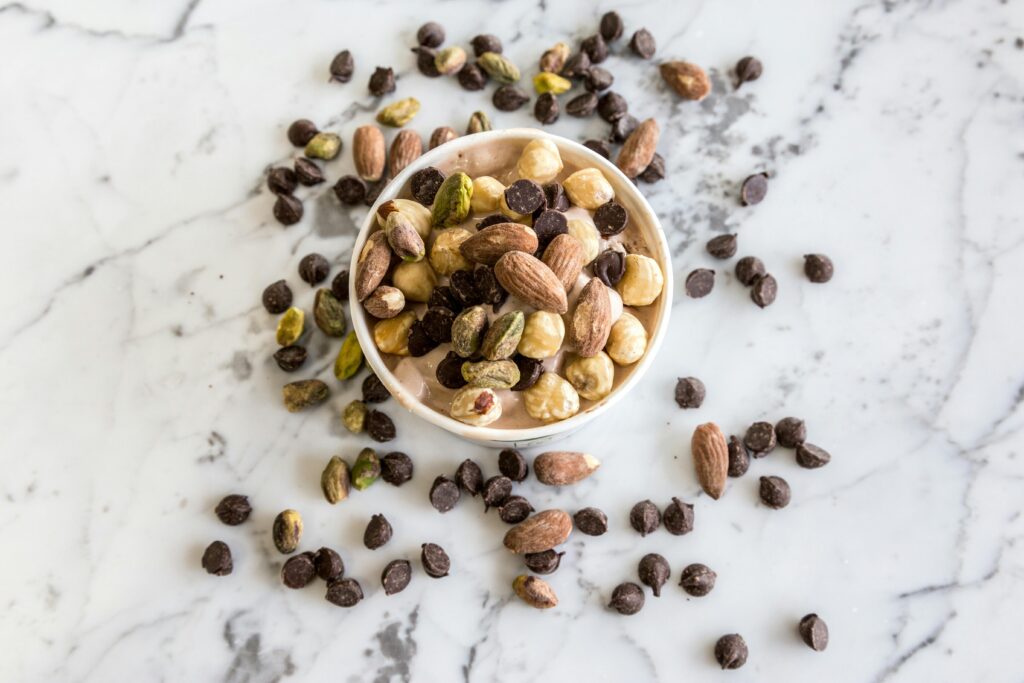Are you looking for ways to keep your blood pressure in check? Your diet can play a big role in managing your blood pressure.
Eating certain foods can help lower your blood pressure and improve your health.
You don’t need to make huge changes to see results. Small tweaks to your eating habits can make a difference.
Adding more fruits, veggies, and whole grains to your meals is a great start. These foods are packed with nutrients that support heart health.
Cutting back on salt is another easy way to help your blood pressure. You can try using herbs and spices to flavor your food instead.
Making these simple changes can lead to better health over time. Remember, a balanced diet is just one part of a healthy lifestyle that can help manage your blood pressure.
Understanding Blood Pressure and Dietary Impact
Your food choices can make a big difference in your blood pressure. What you eat affects how your heart and blood vessels work.
What Is High Blood Pressure?
High blood pressure happens when the force of blood pushing against your artery walls is too high. It’s also called hypertension.
Normal blood pressure is below 120/80 mm Hg. You have high blood pressure if your numbers are 130/80 mm Hg or higher.
High blood pressure can hurt your heart and other organs. It makes your heart work harder to pump blood. This can lead to heart disease and stroke.
You can’t feel high blood pressure, so it’s important to get checked. Many things can cause it, like:
- Getting older
- Being overweight
- Not exercising
- Eating too much salt
- Drinking too much alcohol
How Diet Influences Blood Pressure
What you eat plays a big role in your blood pressure. Some foods can help lower it, while others can make it go up. A heart-healthy diet can help keep your blood pressure in check.
The DASH diet is great for lowering blood pressure. DASH stands for Dietary Approaches to Stop Hypertension.
It focuses on:
- Fruits and veggies
- Whole grains
- Low-fat dairy
- Lean meats
- Nuts and seeds
This diet is high in potassium, calcium, and magnesium. These nutrients help control blood pressure. It’s also low in sodium, which can raise blood pressure when you eat too much.
Key Foods to Lower Blood Pressure
Eating the right foods can help you control your blood pressure. A mix of fruits, veggies, whole grains, nuts, and lean proteins can make a big difference. Let’s look at some tasty options that may help lower your numbers.
Fruits and Berries
Fruits are sweet treats that can help your heart. Berries are stars in this group. Blueberries and strawberries are packed with good stuff for your body. They have things called flavonoids that may help your blood vessels work better.
Oranges and kiwis are great too. They have lots of vitamin C. This vitamin helps your body make a substance that relaxes your blood vessels.
Try to eat a mix of fruits every day. Add berries to your breakfast or have an orange as a snack. You can also blend fruits into a tasty smoothie.
Vegetables and Leafy Greens
Veggies are your friends when it comes to blood pressure. Leafy greens like spinach are super helpful. They have nitrates that can lower your blood pressure quickly.
Beets are another great choice. They’re full of nitrates too. You can roast them, add them to salads, or drink beet juice.
Garlic is a flavor powerhouse that’s good for your heart. It has compounds that can help your blood vessels relax.
Try to fill half your plate with veggies at each meal. Mix up your choices to get different nutrients.
Stir-fry some greens, snack on carrot sticks, or add garlic to your cooking.
Whole Grains and Oats
Whole grains are full of fiber and other good stuff for your heart. Oats are a top pick for lowering blood pressure. They have a special kind of fiber called beta-glucan that can help.
Brown rice, whole wheat bread, and quinoa are other good options. They give you energy without making your blood sugar spike.
Try to make at least half of your grains whole grains. Have oatmeal for breakfast, use whole grain bread for sandwiches, or try quinoa as a side dish.
Nuts and Seeds
Nuts and seeds are small but mighty when it comes to heart health. Almonds and pistachios are great choices. They have healthy fats, fiber, and minerals that can help lower blood pressure.
Flaxseeds are tiny powerhouses. They have omega-3 fatty acids that are good for your heart. You can grind them up and add them to lots of foods.
Aim for a small handful of nuts or seeds each day. Sprinkle them on salads, add them to yogurt, or just munch on them as a snack.
Lean Proteins and Fatty Fish
Protein is important for your body, but some sources are better than others for your blood pressure. Salmon and other fatty fish are top picks. They have omega-3 fatty acids that can help your heart.
Lean meats like chicken and turkey are good options too. They give you protein without extra fat that could hurt your heart.
Lentils and other beans are great plant-based proteins. They’re full of fiber and minerals that can help lower blood pressure.
Try to eat fish twice a week. Choose lean meats when you eat other animal proteins. Add beans to soups and salads for a protein boost.
Essential Nutrients for Heart Health
Certain nutrients play a key role in keeping your heart healthy and blood pressure in check. Let’s look at some important nutrients and the foods that contain them.
Potassium Powerhouses
Potassium helps your body get rid of extra sodium and eases tension in your blood vessel walls. This can lower your blood pressure. You can find potassium in many tasty foods:
- Bananas
- Sweet potatoes
- Spinach
- Beans
- Avocados
Eating these foods regularly can boost your potassium intake. For example, one medium banana has about 422 mg of potassium. Leafy greens like spinach are also great sources. Try adding them to salads, smoothies, or omelets.
Magnesium-Rich Foods
Magnesium helps your blood vessels relax, which can lower blood pressure. Good sources of magnesium include:
- Nuts (almonds, cashews)
- Seeds (pumpkin, sunflower)
- Whole grains
- Dark chocolate
A handful of nuts or seeds makes a great snack. You can also sprinkle them on yogurt or oatmeal. Whole grain bread and pasta are easy ways to add more magnesium to your meals.
The Calcium Connection
Calcium doesn’t just help your bones – it’s good for your heart too. It helps your blood vessels tighten and relax when they need to. You can get calcium from:
- Low-fat dairy products
- Leafy green vegetables
- Fortified plant milks
- Sardines
Try to have 2-3 servings of low-fat dairy each day. If you don’t eat dairy, fortified plant milks and leafy greens are good options.
Antioxidant Benefits
Antioxidants protect your heart by fighting damage in your body. They’re found in many colorful fruits and vegetables. Some top sources are:
- Berries (strawberries, blueberries)
- Citrus fruits
- Tomatoes
- Leafy greens
- Nuts
These foods are rich in vitamin C, lycopene, and flavonoids. Berries are especially high in anthocyanins, a type of antioxidant. Try to eat a variety of colorful fruits and veggies every day.
Healthy Lifestyle Habits
A few key habits can help lower your blood pressure. Eating well and staying active are two big ones that can make a real difference.
The DASH Diet Approach
The DASH diet is a great way to eat for better blood pressure. DASH stands for Dietary Approaches to Stop Hypertension. It’s all about eating foods that are good for your heart and blood vessels.
Here’s what to eat on the DASH diet:
- Lots of fruits and veggies
- Whole grains
- Low-fat dairy
- Lean meats, fish, and poultry
- Nuts, seeds, and beans
The DASH diet is low in salt, sugar, and unhealthy fats. It’s high in nutrients that help lower blood pressure, like potassium and magnesium.
Try to cut back on salty foods. Aim for less than 2,300 mg of sodium per day. If you can get it down to 1,500 mg, that’s even better for your blood pressure.
Exercise and Physical Activity
Getting your body moving is a great way to lower blood pressure. Regular exercise makes your heart stronger, so it can pump blood with less effort.
Try to get at least 30 minutes of exercise most days of the week. You can:
- Go for a brisk walk
- Ride a bike
- Swim
- Dance
- Do yoga
Start slow if you’re not used to exercising. Even small amounts of activity can help.
As you get stronger, you can do more.
Remember to talk to your doctor before starting a new exercise plan. They can help you find activities that are safe and fun for you.
Frequently Asked Questions
Managing blood pressure through diet can be simple and effective. Here are some common questions and answers about foods that can help lower your blood pressure.
What are some effective dietary strategies for managing high blood pressure?
Eating more fruits and veggies is a great start. The DASH diet is made for lowering blood pressure. It focuses on whole grains, lean meats, and low-fat dairy.
Cutting back on salt is key. Try using herbs and spices to flavor food instead.
Can certain fruits have a negative impact on blood pressure, and which should be avoided?
Most fruits are good for blood pressure. Citrus fruits like oranges and grapefruits can help lower it.
But watch out for canned fruits with added sugar. Fresh or frozen fruits without added sugar are better choices.
What are the top foods that have been shown to contribute to increased blood pressure levels?
Salty foods are the main culprit. Processed foods, canned soups, and fast food often have lots of salt.
Too much alcohol can raise blood pressure. Limit drinks to one per day for women or two for men.
How can hydration affect blood pressure, and is drinking water beneficial?
Drinking enough water helps your blood flow better. This can lower blood pressure.
Aim for 8 glasses of water a day. If you don’t like plain water, try adding a slice of lemon or cucumber.
Are there any quick dietary tips for reducing blood pressure immediately?
Eating a banana can give you a quick potassium boost. This mineral helps control blood pressure.
Having a glass of beet juice might also help lower blood pressure fast.
Could you provide a brief outline of a diet plan that targets high blood pressure reduction?
Start your day with oatmeal and berries.
For lunch, try a spinach salad with grilled chicken and olive oil dressing.
Snack on nuts or Greek yogurt.
For dinner, have baked salmon with roasted veggies and brown rice.


